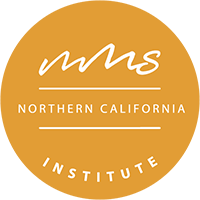Consistent good leadership is an essential skill, one more important than ever in all workplaces – private, not-for-profit or government. Although this article focuses on nonprofit leadership, many of these questions apply to anyone already a leader, or aspiring to be one. The last two years with the global pandemic and social, political and economic turmoil, have tested our professional acumen, stress levels and maybe even our health. If you need to be inspired in your leadership in these difficutl times, do read this article: Leadesrhip Lessons from Dr. Martin Luther King Jr.
In the nonprofit sector, the upheaval in employment and hence personal finances has impacted philanthropy. Volunteers may not have been available due to lockdowns, safety protocols or time available. Educators have somehow managed to move to online learning and empty campuses. Even your devoted employees energized by your organization’s mission may have unexpectedly left for remote work or more money, and it’s hard to recruit talented replacements.
This is a lot, even for the most experienced nonprofit leaders and professional colleagues. Take time to pause, grab a cup of tea or a glass of wine, and ask yourself the following eight questions to help reset your organization for success – and why not invite your leadership and diversity of professional colleagues to join in too?
Are We Still Connecting with Passion and Purpose
Nonprofit organizations are founded with a clear purpose – be it providing learning, improving the human condition or benefiting the local community. Talented professionals who look to these workplaces for employment are usually motivated by deep passion in their work, and donors and volunteers are moved to invest because of the mission’s purpose.
Consider: Is my organization still serving its purpose, and if yes, to what degree and for whom? Do I and my colleagues still have the passion to navigate our current challenges? Can we benchmark that passion on a scale from one to ten, and is there agreement? If there are questions or doubts, how can we rekindle the fires?
Take a deep breath. These are hard questions for any leader and organization.
Do you have the resources – from your board, leadership team, mentor or coach – to provide the necessary support to look for and respond effectively to the answers?
Does Everyone Know Where We are Going

Great nonprofit leaders also know that all organizations – alongside their board of directors or executive committee – should periodically review its vision and mission. Have you recently revised, adjusted or created a new strategic and implementation plan given the disruptions of the last two years and the dynamics of the environment we find ourselves in?
Nonprofit organizations also have many invested stakeholders (remember that purpose and passion above) so it’s critical these diverse constituents know where you and the organization are headed. Are you staying the course or taking a detour or a new direction, maybe to get to the same place or a new destination because of the circumstances that require it?
Do you have the required creative and conceptual skills to keep all the stakeholders going in the same direction, and if you see gaps, are you able to address them?
Several of my clients seek to hone their elevator pitches, telling a new story with the most impact. They know there are limited attention spans, especially over a screen. They also know that successful leaders need to garner support by sharing their vision and the organization’s journey, with passion, clarity and confidence.
Are We Still Connecting Vision and Mission to the Investment
Nonprofit leaders know they must provide a social return on investment as opposed to a financial return sought in the private business world. As the Third Sector Company points out, the nonprofit leader has to not only create a positive financial bottom line but must also work equally hard to show a measurable social bottom line or social profit, resulting from the work. This is often more complex with variables that come from working with a community, instead of a building or factory.
So, do we still have tangible evidence of the impact from our mission? How are we demonstrating that impact to our diverse stakeholders? Have we adapted our communication to tell a powerful and compelling story?
Are We Investing in Staff and their Learning & Development
Financial realities impacted many line items, from headcount to travel expenses. Professional development monies are also easier to reduce, and in many cases, have remained depleted as organizations balance smaller budgets.
With financial mitigation also comes disruption of traditional learning and development. Depending on the sector, in-person conferences, on-site training workshops and staff retreats have been non-existent, moved on-line or not funded. Add to acute screen fatigue and many staff may show little interest in learning new things.
Depending on resources available, what are the skill gaps to take your organization forward (for example, instructional design to deliver virtually learning)?
What are critical skills and networks that your organization will require to move forward? With turnover, lots of new supervisors and managers will need investment to be successful. Are you able to adequately ensure diversity, equity and inclusion? Is your staff burned out, hence lacking motivation, and feeling less connected to their purpose for work? What energizes them? If they are burned out, is it okay for a pause? Does the team require professional coaching?
Can the Organization Align with the New Workplace
Even with compelling passion, purpose and mission, an organization and a great nonprofit leader cannot counter national trends, and the workplace and compensation are two drivers that have left many nonprofit professionals ready for a retreat, or a coach.
Obviously, where employees do their work is the conversation of the year. Some nonprofits are able to offer remote or hybrid work, and may encourage it as a tradeoff to reducing or exiting out of physical office space. Others are unable and unwilling to leave the traditional workplace, especially those in education (teachers!), higher education campuses and those who work directly with the local community.
More likely, you may have a workforce that is gathered in centralized places, and now employees each have a different opinion – hate work from home, need to get away, don’t feel safe in the ‘office’ and others who love hybrid… What is a leader to do?
Keeping up with compensation expectations is also a big challenge for any nonprofit leadership team and board. Recruiting qualified staff with the old adage, “I don’t do it for the money, I love my job” may be gone. The reality of small margin budgets make things an ever bigger challenge.
Have I Prioritized Mindfulness
Leading mission-driven organizations and assuring mission realization is some of the most critical work on the planet. We support people when the government can’t and business won’t. Our day-to-day work is life-giving.
Dr. Theresa Ricke-Kiely, author of the forthcoming book, Mindful Nonprofit Leadership, advises that “in today’s nonprofit organizations, being mindful is becoming an essential skill. It is a paradox- if you cannot manage yourself, how can you effectively lead others?”
Ricke-Kiely explains that mindful leadership is about being proactive and responding- not reacting to the outer (or inner) world voices. Leaders are attentive and act with intention. They observe (not judge) and listen deeply without getting distracted by the noise.
You may already have a mindfulness practice. If not or you want to re-engage, check out Coach Muriel Murphy’s article on 10 Practices for Rejuvenating Your Body & Mind Through Better Sleep on this blog.
How do I Show Vulnerability as a Nonprofit Leader
Since Brené Brown’s best-selling books, The Power of Vulnerability, Daring Greatly and Dare to Lead, vulnerability has become part of the leadership toolkit. Brown’s extensive research shows that being vulnerable is being authentic, and as a leader, involves a change in mindset that enables you to see through the eyes of the people you lead. By doing so, you invite them to become the drivers of the conversation. The result is that people become more involved and invested.
Have you paused to assess how you show vulnerability as a leader? Take the opportunity to explore how to learn its value, recognize your own vulnerability, practice and use it as a new or reclaimed superpower.
Have I Assessed my own Power Skills
Speaking of superpowers, have you evaluated your own power skills, formerly known as soft skills? Which are your strongest? Can you identify and articulate to strengthen your gaps?
A recent McKinsey Global Survey found that most respondents say that skill building (more than hiring, contracting, or redeploying employees) is the best way to close performance gaps and that respondents have doubled down on their efforts to reskill or upskill employees since the pandemic began. The survey results also point to a shift in the most important skills to develop, which tend to be social and emotional in nature: for example, empathy, leadership, and adaptability.
Work through your power skills, celebrate your strengths and get vulnerable and authentic about your gaps in leadership. Invite your board, leadership team, and staff to participate in reflecting on their power skills.
One last suggestion: consider getting a Professonal or Executive Coach. You can check out our MMSNorCal Coaching Collective – we can facilitate these conversations and our coaches can work with you to clarify your goals, map your path, hone your skills and provide steady support to ensure your success!
Here are three articles on this blog that can also help you further understand the value and benefits of a coaching program:
- When you Need a Professional or Executive Coach
- The Actual ROI of Coaching
- How a 40 Billon Dollar Global Company Launched an Internal Professional Coaching Program



